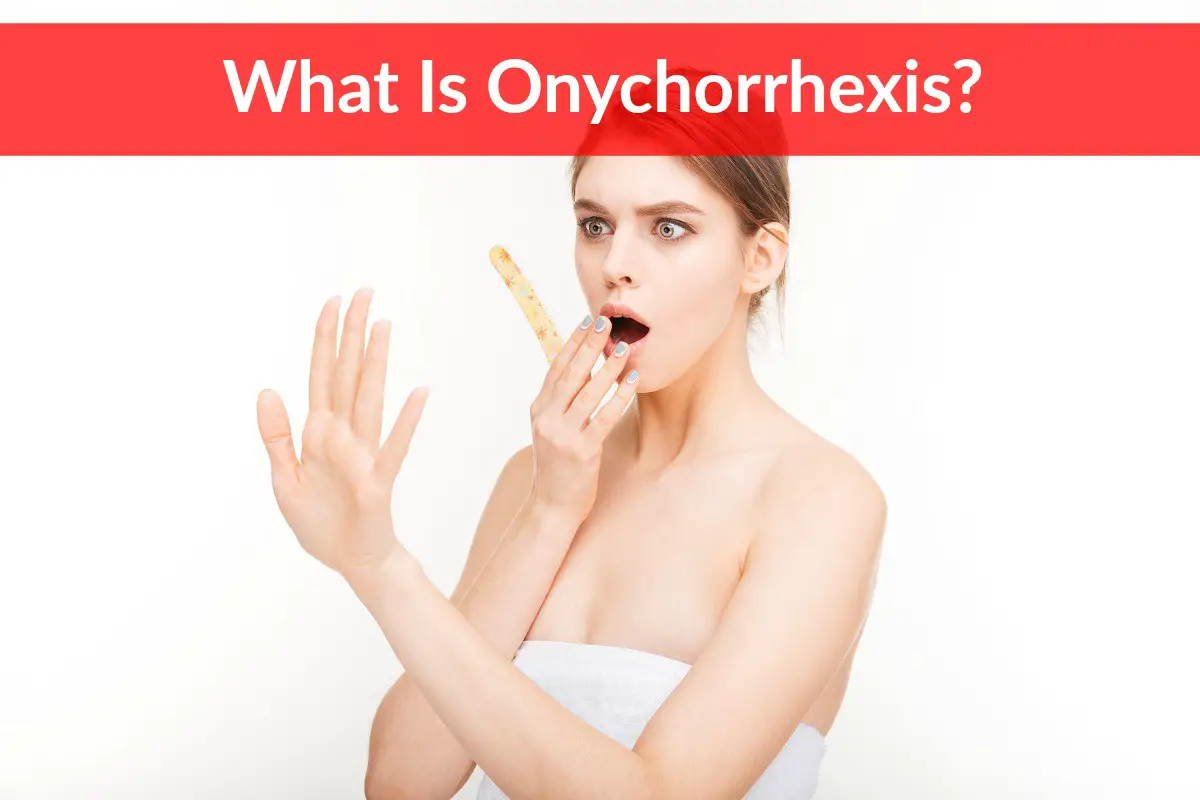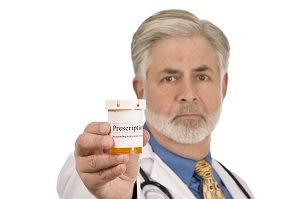Onychorrhexis is more commonly known as “brittle nail syndrome” or simply “brittle nails.”
According to Wikipedia, the medical name, onychorrhexis, comes from two Greek root words. The first, Onycho, translates to mean “nail.” The second, Rhexis, means “bursting.”
Whether or not there is a correlation, hand appearance is often considered a visible sign of general good health in popular culture today. In this way, being diagnosed with onychorrhexis can be distressing.
It can also cause uncomfortable symptoms such as pain and tenderness around the nail bed.
In this article, learn what you need to know about this condition, including what causes it, major symptoms and warning signs, how it is diagnosed and treated and whether onychorrhexis can be prevented.
What Is Onychorrhexis?
Onychorrhexis may be commonly called brittle nail syndrome, but it actually encompasses more than just brittle nails themselves.
Causes
Current estimates suggest that 20 percent of adults may be suffering from onychorrhexis. This in part is due to the sheer number of potential triggers that can cause onychorrhexis onset.
As Health online reports, one of the most common and best-known causes is simple aging. (1) As the body gets older, tissues dry out, circulation becomes less efficient and the skin becomes more prone to infection and systemic illness.
Each of these issues can lead to onychorrhexis, as the National Institutes of Health (NIH) points out.(2)
However, there are a number of other causes for this disorder that are related to another underlying medical condition rather than the simple process of aging:
» Heredity. In certain rare cases, individuals are born with a genetic predisposition to developing brittle nail syndrome, often as a result of another underlying medical condition.(3)
» Eating disorder. If a patient is diagnosed with anorexia (self-starvation) or bulimia (binging and purging), the lack of balanced nutrition can lead to the onset of onychorrhexis as their disease progresses.
» Skin conditions. Patients diagnosed with psoriasis or eczema have a higher risk of developing this nail problem as well.
» Anemia. Insufficient iron content in the blood.
» Hypothyroidism. When the thyroid gland in the body does not produce sufficient quantities of hormones.
» Cancer. In some cases, cancer itself or the toxicity of cancer treatment (chemotherapy, radiation) can cause this condition.
Research has also highlighted a number of triggers that relate to environmental issues or personal habits:
» Overuse of or repeated exposure to chemicals or solvents. Some of the best examples here are nail polish remover and cuticle solvents, but any harsh chemical, including soaps or detergents.
» Typing. If the nails are longer than the nail bed and tap on a keyboard all day, this can cause the nails to start to develop symptoms of brittle nails.
» Dehydration or malnutrition. If the body is not receiving sufficient quantities of water or nutrients, the nail beds can show symptoms before other body systems will.
» Constant immersion of the nails in water. Nails that are continually soaked with water can become weak and more prone to cracking and breakage.
» Repeated exposure to cold. Simply not wearing gloves during cold weather can give rise to onychorrhexis.
» Trauma or injury. If the nails or nail beds suffer a trauma or an injury, this can cause the nails to grow improperly or develop this nail issue in the future.
 Symptoms and Warning Signs
Symptoms and Warning Signs
Onychorrhexis has very defined symptoms that are easy to spot.
The most common symptoms as presented by Prime Health Channel are as follows:(4)
» Nails break easily as the layers of protein begin to break down.
» Nails peel back in layers from the edge of the nails inward towards the cuticles.
» Nails develop ridges that extend from the cuticle to the nail edge.
» Nails split at the ends (this is actually a related disease called Onychoschisis).
It is possible to have one, a few or all symptoms to be diagnosed with onychorrhexis.
How Is Diagnosed
Diagnosing onychorrhexis begins with a list of patient symptoms.
While a family physician may be able to make a definitive diagnosis, in most cases the best approach is to make an appointment with a dermatologist, a specialist that is highly trained in skin and nail disorders.
The diagnostic process begins with a presentation of patient symptoms and a physical examination of the nails and nail beds.
The physician will want to take a thorough personal and family medical history, paying special attention to any family members who may have a genetic condition that could cause this condition.
As well, if the patient has previously been diagnosed with anemia, an eating disorder, hypothyroidism, psoriasis, eczema or another condition known to lead to onychorrhexis, this will be carefully noted during the appointment.
After taking symptoms and medical history and doing a physical exam, the final step may be to take a CBC (complete blood count).
This can be helpful for diagnosing anemia as well as for detecting blood, hormone or protein markers that could indicate another underlying medication condition that may be causing this nail disorder.
During the diagnostic phase, it is also important to rule out other nail disorders with similar symptoms, such as onychoschisis (see the previous section here for details).
Once this process is complete, it is possible to make a definitive diagnosis of onychorrhexis and begin the treatment phase.
 Treatment Options
Treatment Options
To date, there is no one single recommended treatment for this condition itself.
Although, a 2011 study by Clinical Research Unit from Columbia University Medical Center, showed that tazarotene cream 0.1% has a positive treatment effect.(5)
If there is an underlying medical condition that is the cause, such as anemia, treating this condition can also alleviate symptoms of onychorrhexis.
In the same way, if onychorrhexis has arisen as a result of particular habits such as heavy exposure to chemicals, continual exposure to cold or water, repetitive typing or injury, treatment will focus on minimizing or modifying daily life habits to avoid these triggers.
Wearing protective gloves can be a good option regardless as nails heal.
When an underlying case of psoriasis or eczema is linked to this condition, sometimes changing hand creams or lotions or starting to use a plant-based essential oil can help ease symptoms.
Some general treatments are typically recommended in addition to any onset-specific treatments:
» Multivitamin. Starting to take a multivitamin can boost nutrient levels in the body and replenish nails with vital minerals and proteins.
» Natural moisturizer. Use of Vitamin E oil or plant-based oils for moisturizing can help ease dryness and cracking associated with onychorrhexis.
» Hydration. Drinking more water can help restore moisture to the body and the nails.
» Changing nail care products. Changing to all-natural nail care products can help prevent exposure to harsh or drying toxins.
» Trim nails. This is especially important when working on the computer to keep nails from cracking and splitting.
» Anti-fungal soaks. You can combine argan oil and lemon juice or use vegetable oil (such as olive oil) as a soak to kill fungi.
The National Institutes of Health (NIH) reports that use of nail hardeners and the medication Biotin are also being tested as potential treatments for fragile nails.(6)
Can It Be Prevented?
While onychorrhexis is not contagious and will often resolve after sustained treatment, there is currently no sure way to prevent it from occurring.
The best approach is to avoid known triggers such as harsh chemicals, eat a healthy diet, get plenty of hydration, keep nails neatly trimmed and use all-natural, plant-based skin and nail care products.
If you or someone you love has been diagnosed with, it is quite natural to feel distressed or upset. Certainly you will be eager to treat it and get rid of the uncomfortable symptoms!
After reading this article, you will have the general information you need to take the next steps:
» Visit a dermatologist or family doctor to get an accurate diagnosis.
» Follow all treatment recommendations faithfully.
» Give your hands, nails and nail beds a break from manual tasks like dish washing.
» Follow a healthy lifestyle that includes plenty of vitamins, minerals, water, fresh produce, lean meats and healthy fats.
» Try to de-stress and rest.
References
(1)”healthh.com/onychorrhexis/
(2)”ncbi.nlm.nih.gov/pmc/articles/PMC3038811/
(3)”ncbi.nlm.nih.gov/pubmed/10673446
(4)”primehealthchannel.com/onychorrhexis-pictures-causes-symptoms-and-treatment.html
(5)”ncbi.nlm.nih.gov/pubmed/21416778
(6)”ncbi.nlm.nih.gov/pubmed/17134427
Leave Feedback: Was this article helpful?


 Symptoms and Warning Signs
Symptoms and Warning Signs Treatment Options
Treatment Options